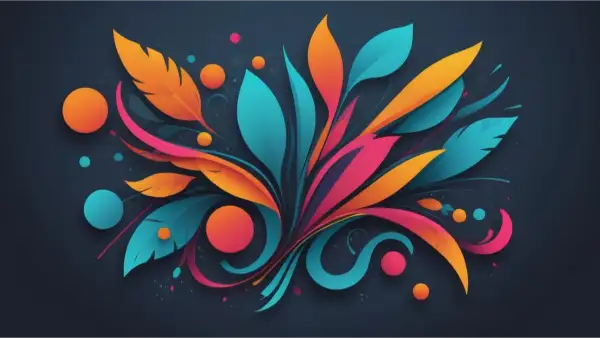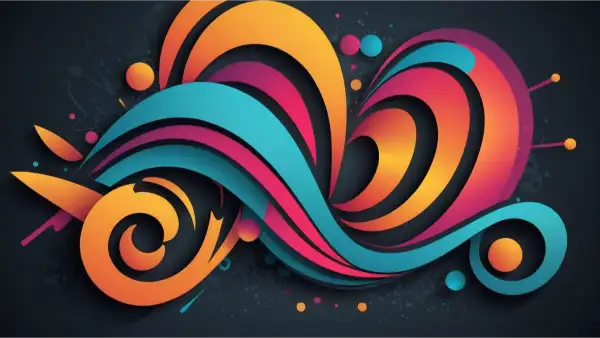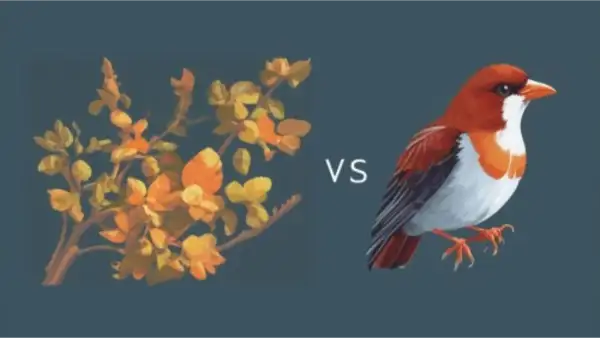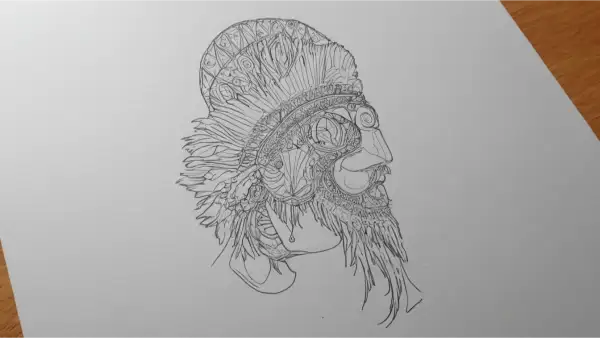Advantage’s of Using Vector Graphics
Vector graphics are digital images. Geometric elements, like points, lines, and shapes, make them. Designs form by layering and arranging these elements. Pixels make up raster graphics. Vector graphics store geometric information as math coordinates. This gives vector graphics many advantages over raster graphics. These include scalability, editability, small file size, and multipurpose use. In this article, we will explore a key advantage of vector graphics: scalability.

What is Scalability?
You can resize an image without losing quality or clarity, demonstrating scalability. When you zoom in or out of a raster image, you can see the individual pixels that make up the image. This makes the image look blurry or pixelated. But, when you zoom in or out of a vector image, the image recalculates the shapes to fit the new size. This keeps the image looking crisp and clear. You can scale vector images infinitely, allowing you to resize them without limit. They can go from a tiny logo on a pen to a billboard and to any other size. Know More About Vector Graphics Editors

Pixels make up a raster image in a grid of tiny squares. Each pixel has a specific color and location. The number of pixels in a raster image determines its resolution. The higher the resolution, the more pixels and the more detail the image has. However, the resolution also limits the size of the image. If you enlarge a raster image, the pixels will become visible.
The image will look blurry or pixelated. This is because the image cannot create new pixels to fill in the gaps. It can only stretch or duplicate the existing pixels. This means that raster images are not scalable. They have a fixed size and quality. Some examples of raster images are JPEG, PNG, GIF, and BMP files.

Math equations make up a vector image. These equations define the shapes, curves, colors, and positions of the image. These equations go by the name of vectors. Unlike pixels, vectors are not dependent on resolution. You can scale them up or down without losing any quality or clarity. This is because the image can recalculate the vectors to fit the new size.
It can create new points and curves to maintain the smoothness and sharpness of the image. This means that vector images are scalable. You can resize them infinitely and they will still look crisp and clear. Some examples of vector images are SVG, EPS, PDF, and AI files.
Why is Scalability Important?
Scalability matters for many digital and print applications. This is especially true today because there are many screen sizes and resolutions. For example, if you want to create a logo for your brand. You would want it to look sharp and professional. You will use it on your website, business card, and social media
You will also use it on your merchandise. Using a vector image for your logo would ensure that it can be easily adapted to any size and format. This would not compromise its quality or identity.
Scalability is also important for web design. It affects the user experience and the website’s performance. Vector images, like SVG (Scalable Vector Graphics), can speed up web pages. They have smaller file sizes than raster images. Also, vector images can be responsive.
They can adjust to different screen sizes and orientations. They do this without losing their proportions or details.
How to Create and Use Scalable Vector Graphics?
To make vector graphics, you need to use vector graphics software. Examples include CorelDRAW, Adobe Illustrator, and Inkscape. The programs let you draw and change geometric elements. You use various tools and features. You can also import raster images.
Then you can convert them into vector images using these programs. But, the quality and accuracy of the conversion may vary. It depends on the complexity and resolution of the original image.

To use vector graphics, you need to save them in a vector file format, such as SVG, EPS, PDF, or AI. Vector graphics software can open and edit these formats. Some other programs, like web browsers, word processors, and presentation software, can too. But, not all programs or devices can support vector file formats.
So, you may need to convert them to raster file formats, like JPG, PNG, or GIF, for compatibility.
You can also use online tools, like CloudConvert, to change vector files to raster files. But, this may cause some quality loss or distortion.
What are some other advantages of vector graphics?
Some other advantages of vector graphics are:
- You can edit them. You can easily change their color, shape, size, or orientation. This won’t affect the image’s quality or resolution.
- They are convertible. You can export them to different file formats, like raster, PDF, or SVG. The format you choose depends on your needs and preferences.
- They are great for teamwork. You can share them with other designers or clients. They can then make changes or suggestions without losing the original design.
- They have a small, easy to manage, and shareable file size. They take up less storage space and bandwidth than raster images. You can transfer or upload them faster and easier.
How can you convert a vector file into a raster file?
A vector file is a type of graphic file that uses mathematical formulas to create shapes and lines. A raster file is a type of graphic file that uses pixels to create an image. You need a program or website to convert a vector file to a raster file. It has to be able to do the conversion. This process is also called rasterization.
One of the websites that can do this is VectorMagic It is an online tool. It can trace your vector file and make a raster file in many formats. You can also adjust the settings and edit the result before saving it. To use VectorMagic, you need to upload your vector file. Then, wait for the initial trace and download the raster file. You can also hand-pick the settings to get a better result.
Another way to convert a vector file into a raster file is to use a software like Inkscape. It is a free and open-source vector graphics editor. It can also trace bitmaps and create vectors. To use Inkscape, you need to open your vector file, select the image, and then click on Path > Trace Bitmap. You can then choose the tracing mode and the number of colors, and then click OK. You can then export the raster file in various formats.
Other methods and tools can convert a vector file to a raster file-. They include inverse distance weighting, kriging, natural neighbor, and more. The best method depends on your vector file’s quality and complexity. It also depends on your raster file’s purpose and format.
Sources:
Conclusion
Vector graphics are powerful and versatile. They have many advantages over raster graphics. Vector graphics have a big advantage: they are scalable. This allows resizing them without losing quality or clarity. Scalability is key for many digital and print uses.
These include logos, icons, illustrations, web design, and print. To make and use vector graphics, you need vector graphics software and file formats. You also need to convert them to raster formats when needed.
Frequently Asked Questions?
What is one advantage of using vector graphics?
One advantage of vector graphics is scalability. You can resize them without losing quality or clarity.
What is the difference between vector graphics and raster graphics?
Vector graphics are digital images. Basic shapes like points, lines, and shapes make them. The designer layers and arranges the shapes to form designs. Raster graphics are digital images. Pixels are tiny squares of color. The pixels form a grid.
What are some examples of vector graphics software and file formats?
A: Some examples of vector graphics software are CorelDRAW, Adobe Illustrator, and Inkscape. Some examples of vector file formats are SVG, EPS, PDF, and AI.
How can you convert a vector file into a raster file?
You can change a vector file to a raster file using vector graphics software. For example, CorelDRAW, Adobe Illustrator, or Inkscape. Just choose to save or export as a raster file format, such as JPG, PNG, or GIF. You can also use online tools, like CloudConvert, to change vector files to raster files. But, this may cause some quality loss or distortion.
